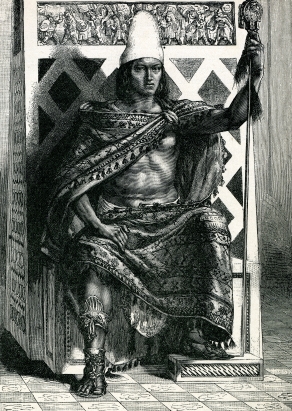Where was the Aztec calendar rediscovered today in 1790?
 December 17, 1790 — The Aztec calendar stone — known as the Sun Stone, or Stone of the Five Eras — was rediscovered today during repairs on the Mexico City Cathedral.
December 17, 1790 — The Aztec calendar stone — known as the Sun Stone, or Stone of the Five Eras — was rediscovered today during repairs on the Mexico City Cathedral.
The Aztecs had determined the Earth’s orbit lasted 365.2420 days. This number is slightly closer to the true value (365.2422) than the 365.2425 figured by the Gregorian version in 1582.
Shortly after the Spanish Conquest, the monolithic sculpture was buried in the Zócalo, which was the main square of Mexico City. The late post-classic Mexica sculpture is perhaps the most famous work of Aztec sculpture. Measuring 11.75 feet in diameter and 3.22 feet thick, it weighs about 24 tons.
Believed at first to be a native take on the typical calendar, anthropologists have revised original theories to give the Sun Stone a special ritual significance.
According to mapsofworld: The Aztecs, unlike their European counterparts using the Julian calendar or its later Gregorian update, kept track of time with separate cycles for agriculture and religious purposes. These two systems overlapped once every 18,980 days (52 years) creating a unique opportunity to engage the people in sustaining the sun for generations to come.
In order to symbolically restart the sun’s burning core, priests would cut open the chest of a chosen victim and light a fire in the gaping wound. Far more than just a means to mark the time between New Fire festivals, the Sun Stone is now regarded as the resting place for the sacrifice.
Sources
Words of Wisdom
I confide to your care my beloved children, the most precious jewels I can leave you. The great monarch beyond the ocean will interest himself to see that they come into their inheritance, if you present before him their just claims. I know your master will do this, if for no other reason, then for kindness I have shown the Spaniards though it has occasioned my ruin. For all my misfortunes, Maliche, I bear you ill will.





